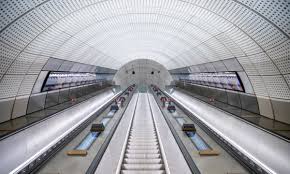Crossrail now known as the Elizabeth line is one of the most complex infrastructure project in the Europe and one of the largest ever undertaken. This large railway project is in London and designed to change the pattern of any sort of crossing within and around the city being an essential addition to the transport system.
Project overview
The length of the Elizabeth Line is more than 114 kilometers (71 miles) – west to east from Reading to Heathrow in the west and Shenfield and Abbey Wood in the east. It goes through 26 new miles of tunnels, passing over sixty stations directly through the heart of London. More about the project includes establishment of new 10 stations and upgrades of the 30 other stations to ensure better and improved connectivity and capacity.

Working in a densely populated city like London had its unique difficulties, especially due to the location of structures and facilities below the city such as the London Underground, sewerage systems, and lines of utilities. To achieve this, most advanced Tunnel Boring Machines (TBMs) were used which are very effective in boring through the various under-ground structures present in London as well as placing precast concrete segments while in the process of Tunneling. Owing to the Elizabeth Line, the economy of London will get a major boost.
Scope
There are claims that it will bring £42bn to the UK economy while also creating thousands of employment opportunities both during. It is expected to promote regeneration in several locations along the railway, which will result in new housing, retail, and commercial spaces.
The sustainability concept has been central of emphasis in the Crossrail project during its planning and development. Mitigations have also been taken to reduce the effects on the environment such as; energy optimization technologies in use and environmentally friendly construction. The project is also environmental sensitive in that it proposes to foster the use of public transport over the use of cars thus adding to the overall environmental targets of London.
Challenges
Nonetheless, the undertaking has experienced some difficulties and project slippages considering the fact that it’s a complex project of high engineering standards. The construction plan was to commence it in 2015 and complete it by December 2018; however, due to several causes like technological challenges, safety concerns, and the connectivity of the new line to other transportation networks, the construction was delayed times to date. These delays were worsened by the COVID-19 pandemic.
The Elizabeth Line symbolize the modern engineering along with the planning of the contemporary civilization. When completed, it holds the potential of revolutionizing London’s mode of transport, by being faster, safer, and more convenient. This transportation project does not only solve the transport issues of the region currently but also paves the way on how new transportation projects should be implemented, showing innovation, sustainability and economic growth.
Read also Lincolnshire County Council highways framework project moves forward in the UK.
Read also Massive Plas Power Estate Solar Farm Proposed, Londong
Also read UK to build one of the world’s largest LDES and the country’s first commercial-scale LAES plant

